| Keynote Speaker Ⅰ | |||
|
|
|||
| Bin Li | |||
| Academy of Aerospace Propulsion Technology, China | |||
| Brief Biography: Bin Li, research fellow and doctoral supervisor, member of the "National Ten Thousand Talents Program" (for Science and Technology Innovation Leaders), is currently the Director of the Science and Technology Commission of The China Academy of Aerospace Propulsion Technology. He has been engaged in the technical research of advanced liquid rocket engines for a long time, and led the team successfully developed the 120-ton high-pressure staged-combustion LOX-kerosene engine, which are employed as the main propulsion system for the new generation Long March launch vehicles. At present, Bin Li is committed to tackling key technologies for propulsion system of manned lunar missions and heavy launch vehicles. He has won a first prize of National Science and Technology Progress Award and 15 National Defense Science and Technology Progress Awards, published more than 50 papers and 3 monographs, and was granted with 35 invention patents. He was honored the 4th Aerospace Laureate Awards, the Qian Xuesen Outstanding Contribution Award from China Aerospace Foundation, and other awards. |
|||
| Speech Title: Key Technologies of Advanced Liquid Rocket Engines |
|||
| Abstract: The liquid rocket engine is the core component of launch vehicles and determines the ability to enter space. With the rapid development of large-scale space infrastructure and the aerospace industry, higher requirements are imposed on liquid propulsion technology. This lecture provides a systematic overview of the major research directions of advanced liquid rocket engines. Beginning with an overview of Chinese liquid rocket engines, the speech addresses representative technical characteristics of advanced liquid rocket engines, including rapid dynamic processes, extreme operating environments, high requirements on manufacturing, and difficulties in fault diagnosis. To overcome these challenges, several research directions have been identified. The speech introduces the latest progress in detail and outlines prospects for future advancement, covering the control of system dynamic characteristics, the design of lightweight structures, the control of combustion stability, the design of high-power-density turbopumps, technologies of reusable engines, as well as fault diagnosis and health management. |
|||
| Keynote Speaker Ⅱ | |||
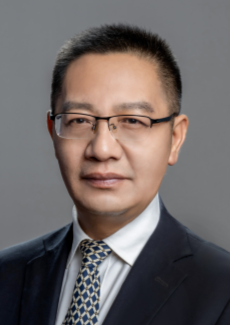 |
|||
| Wenhui Ling | |||
| The 31st Research Institute of CASIC, China | |||
| Brief Biography: Wenhui Ling, a researcher at the 31st Research Institute of CASIC, is an expert in scramjet engines and combined propulsion technology in China. He currently serves as the deputy chief engineer for national major projects and the chief scientist at the source of original technologies in the field of propulsion. With over thirty years of continuous research and engineering practice in this field, he has addressed various propulsion-related technical challenges. He has won two Second-Class National Science and Technology Progress Awards, two First-Class National Defense Technology Invention Awards, one First-Class National Defense Science and Technology Progress Award, six other provincial and ministerial-level awards, and holds more than 110 authorized patents. He enjoys special government allowances from the State Council and has received prestigious honors such as the Aerospace Laurel Award, the Qian Xuesen Outstanding Contribution Award, and the Outstanding Engineer Award. |
|||
| Speech Title: The Research Progress and Key Technologies of Scramjet Engines and Combined Propulsion Systems |
|||
| Abstract: The ramjet engine and hybrid propulsion system are key components in the development of aerospace technology and the realization of aerospace flight. The ramjet engine and hybrid propulsion system can span the domains of aviation, near-space, and even outer space in terms of altitude, while their speed ranges from stationary to hypersonic, and even to the first cosmic velocity. These systems are propulsion devices that integrate both aviation propulsion ("air") and space propulsion ("space") characteristics. They are primarily applied in three main fields: hypersonic missiles, near-space high-speed aircraft, and aerospace vehicles. This report introduces the research progress of ramjet engines and hybrid propulsion systems, and presents the core technological challenges and key technologies in six areas: "domain," "efficiency," "heat," "control," "regulation," and "measurement," in response to the future needs of aerospace vehicles for wider operational ranges, higher efficiency, faster speeds, greater convenience, lighter weight, and higher reliability. Finally, development recommendations are provided. |
|||
| Keynote Speaker Ⅲ | |||
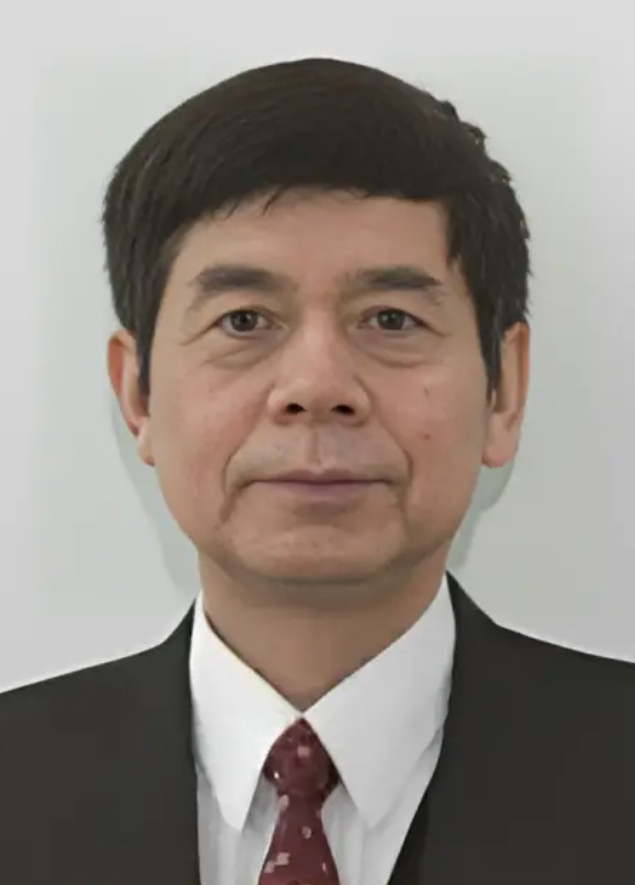 |
|||
| Zonglin Jiang | |||
| Institute of Mechanics, Chinese Academy of Sciences, China | |||
| Brief Biography: Zonglin Jiang is a professor from the Institute of Mechanics, Chinese Academy of Sciences and graduated from the Department of Mechanics, Peking University, and has engaged in gas dynamics research since then. Zonglin Jiang has won the AIAA 2016 Ground Test Award, received the a Distinguished Fellow of the International Shock Wave Institute in 2021, authored about 300 refereed papers and published two academic monographs, including "Gaseous Detonation Physics and Its Universal Framework Theory" by Springer and "Theories and Technologies of Hypersonic Shock Tunnels" by Cambridge University Press. |
|||
|
|
|||
| Speech Title: Critical Condition for Stable Oblique Detonation for Hypersonic Propulsion |
|||
| Abstract: Standing oblique detonation is a unique pressure-gain combustion phenomenon for hypersonic ramjet propulsion, and its research has been related with supersonic combustion in scramjet engines since its births, for example, absent treatment in its early stage and re-consideration in recent decades. Standing oblique detonations and supersonic combustion share the same features of supersonic chemically-reacting flows, and can be considered as different flow stages in its development. Combustion instability in a chemically-reacting flow is reviewed first to identify its fundamental mechanisms, and the upstream-propagating shock wave is identified as one of the most important intrinsic characteristics and taken as the key problem for developing hypersonic ramjet propulsion. Three critical conditions for the standing oblique detonation are proposed as a theoretical base for standing oblique detonation ramjet engines. The first critical condition is the maximum heat that can drive local flow states from supersonic to sonic after combustion. The second one is the critical inflow Mach number of combustors, at which supersonic combustion will transform from instable to stable at full equivalent ratio. The last is the critical wedge angle above which a standing oblique detonation can be initiated. The three critical conditions are discussed in detail and verified with numerical simulations and wind tunnel experiments. In conclusion, the stable operation of hypersonic ramjet propulsion is a critical issue to approach its engineering application, and the standing oblique detonation ramjet engine is recommended as a promising candidate, deserving more attention in the future. |
|||
| Keynote Speaker Ⅳ | |||
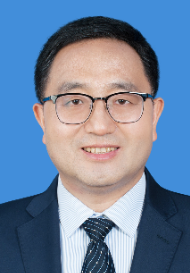 |
|||
| Jinglei Xu | |||
| Nanjing University of Aeronautics and Astronautics, China | |||
| Brief Biography: Prof. Jinglei Xu was born in 1971. He obtained his Bachelor, Master and Ph.D degree of Turbomachinery Engineering from Xi’an Jiaotong University in 1993, 1996 and 1999, separately. Then he joined Nanjing University of Aeronautics and Astronautics (NUAA), and served as professor from 2008 to present. Professor Xu is mainly engaged in the research of engine internal flow dynamics, advanced measurement technology of complex flow field, flow control and fluid thrust vector, etc. More than 170 scientific research papers have been published, including 100 international SCI retrieval periodical papers, and more than 40 papers at AIAA, ASME, ISABE and other important international conferences. He has applied for about 60 national invention patents and 50 authorizations. In 2019, Prof. Xu won the Second prize for national scientific and technological progress in China. |
|||
| Speech Title: On the Research Progress of Thrust Vector Technology |
|||
| Abstract: With the development of the aeronautic science and technology,Thrust vectoring technology, which can meet the performance requirements of future aircraft, such as unconventional mobility and agility, short-range/vertical takeoff and landing, supersonic cruise, etc., is one of the essential key technologies for future aircraft. Thrust vectoring nozzle is the core part of the thrust vectoring technology, and its performance determines the level of the engine technology. In this presentation, the importance and urgent requirement of thrust vector is introduced firstly; then the mechanical variable thrust vectoring nozzle and fixed-geometry fluidic thrust vectoring nozzle are compared; and then the main research developments about the typical types of the fluidic thrust vectoring nozzles are sumarized; Finally, the Bypass Dual Throat Nozzle (BDTN) developed by our group are focused and the main research progress are introduced in details. |
|||
| Keynote Speaker Ⅴ | |||
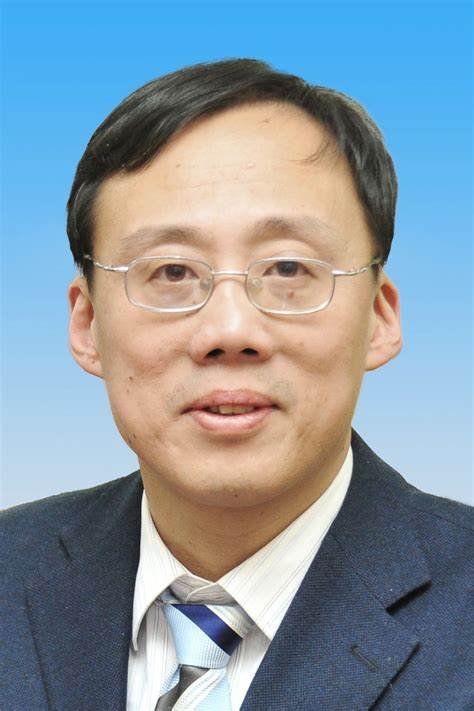 |
|||
| Guang Pan | |||
| Northwestern Polytechnical University, China | |||
| Brief Biography: Dr. Pan is a professor at Northwestern Polytechnical University, where he also serves as a doctoral supervisor. He is a recipient of the Changjiang Scholar Award, a National Teaching Master, and a National Candidate for the "Hundred, Thousand, and Ten Thousand Talent Project." He is an expert receiving government special allowances and currently holds multiple key academic and leadership positions, including the Dean of the School of Marine Science and Technology at Northwestern Polytechnical University, Director of the Ministry of Industry and Information Technology's Key Laboratory on "Unmanned Underwater Transport Technology," Vice Chair of the Expert Committee in a certain field of the Science and Technology Committee, Chief Designer of a key national project, and Chief Scientist for the National Key R&D Program. Additionally, he is in charge of the national first-class undergraduate program in "Shipbuilding and Ocean Engineering" and the first-class course in "Fluid Mechanics". Dr. Pan has been engaged in long-term research on unmanned underwater systems design, hydrodynamics, underwater weapon launch and recovery, among other areas. Over the years, he has led over 30 major projects. He holds more than 30 authorized invention patents, has published two monographs, and authored over 120 papers in journals such as JFM, POF, JFS, OE, Journal of Mechanics, and Acta Physica Sinica, with more than 60 papers indexed in SCI and EI. |
|||
| Speech Title: The Technology and Application of the Glide-and-Swoop Integrated Soft-Bodied Manta Ray-Inspired Underwater Vehicle |
|||
| Abstract: Currently, China’s maritime security faces dual challenges: ecological degradation leading to a sharp reduction in the area of islands and reefs, which threatens territorial sovereignty, and the strict surveillance of key maritime passages, which obstructs the deployment of underwater forces. There is an urgent need to develop new conceptual submarines that are biologically compatible, silent, stealthy, and capable of long-duration autonomous operations. The team led by Pan Guang at Northwestern Polytechnical University has taken the manta ray, known for its efficient gliding, maneuvering, and energy-saving benthic behavior, as the model for innovation. They have pioneered the concept of a gliding-flapping-benthic multi-modal biomimetic soft-bodied submarine, making breakthroughs in four core technologies: bionic dynamics theory, integrated gliding-flapping swimming, multi-modal motion control, and perception-based collaborative operation. The team has developed the world’s most comprehensive lineage of manta-ray-inspired submarines, resulting in six major capabilities: high maneuverability, long endurance, strong biological affinity, stealth, anti-jamming, and autonomous operation. This report focuses on the latest technological advancements and applications of the manta-rayinspired soft-bodied submarine, including its flexible coupling dynamics theory, bionic pectoral fin flapping and variable-wing gliding integrated swimming technology, multi-modal coordinated motion and anti-jamming control technology, as well as multi-source sensing and swarm collaborative operation technology. |
|||
| Keynote Speaker Ⅵ | |||
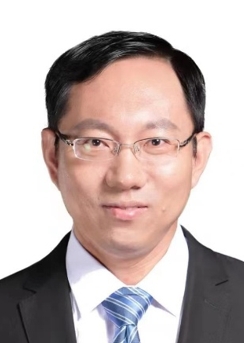 |
|||
| Bing Wang | |||
| Tsinghua University, China | |||
| Brief Biography: Professor Wang, Humboldt Scholar, Associate Dean of the Institute for Aero Engine, Tsinghua University, Director of the Spray Combustion and Propulsion Laboratory. Professor Wang has a long experience in basic and engineering application researches in two-phase flows and reactive flows under extreme conditions. As either the principle investigator or a major participant, he has completed more than 40 major national engineering projects. He has published more than 160 papers in SCI indexed journals such as Progress of Aerospace Sciences, Journal of Fluid Mechanics, Combustion and Flame, Physics of Fluids, more than 70 conference papers, and is the co-inventor of more than 15 Chinese and international patents. He is the winner of multiple golden awards at world-class international invention exhibitions as the Beijing Municipal Award for Scientific Progress. He is currently an Associate Fellow of the AIAA. In 2019, he was awarded as the "TUM Ambassador" by the Technical University of Munich. |
|||
| Speech Title: Modeling Compressible Multiphase Interfacial and Reactive Flows in Aerospace Engineering |
|||
| Abstract: Recent advancements in aerospace technology have significantly increased the demand for hypersonic propulsion systems. In scramjets and detonation-based engines, the intricate interactions between fuel droplets and intense shock waves are critical for enhancing combustor thermal efficiency. This underscores the importance of understanding compressible multiphase interfacial and reactive flows to advance next-generation high-speed propulsion technologies. In recent years, we have developed and implemented a comprehensive suite of high-fidelity numerical strategies—incorporating adaptive mesh refinement, immersed boundary methods, high-order reconstruction schemes, interface-tracking techniques, as well as detailed chemistry and phase transition models—to accurately resolve the coupled evolution phenomena and mechanisms associated with shock waves and detonation dynamics involving Eulerian droplets. Through systematic simulations of both planar and curved shock impacts, along with cellular detonation environments, we elucidate the evolution of transient wave configurations, quantify the onset and growth of interface instabilities, and characterize regimes related to droplet flattening, ligament formation, and fragmentation. Our findings reveal that multidimensional shock structures not only modulate the local thermochemical state surrounding each droplet but also generate complex vortex-driven shear due to surface pit formations that accelerate droplet breakup far beyond classical Weber-number predictions. These insights provide a robust mechanistic foundation for designing next-generation hypersonic vehicles with enhanced atomization capabilities, improved mixing efficiency, and superior ignition performance. |
|||
| Keynote Speaker Ⅶ | |||
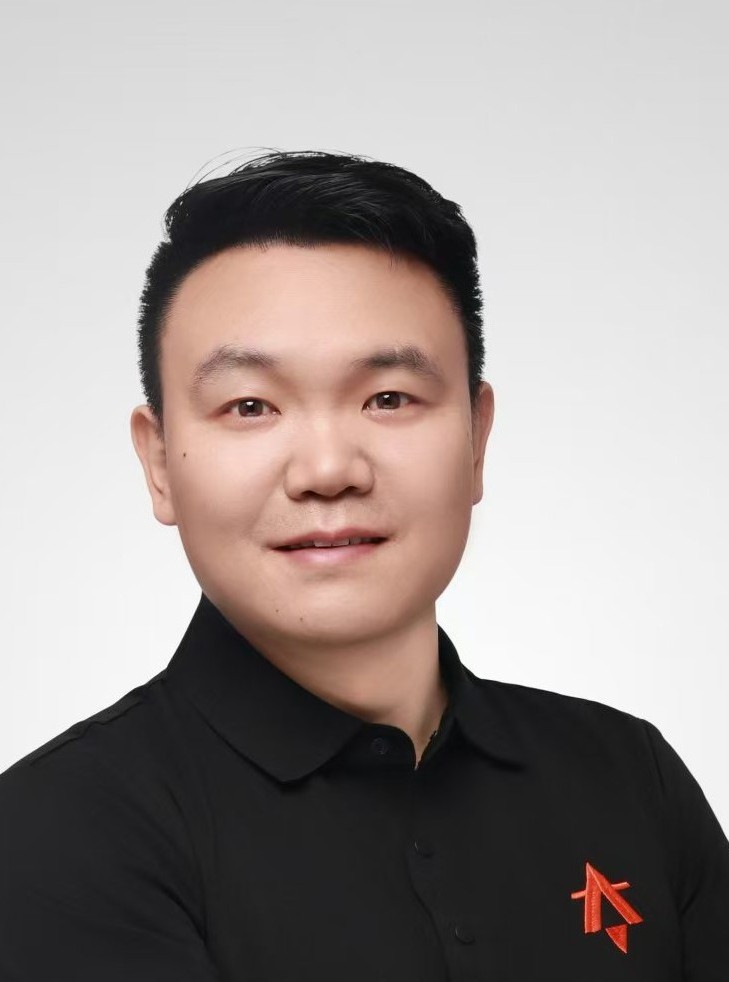 |
|||
| Shuguang Chen | |||
| Shanghai Cosmoleap Aerospace Science and Technology Co., Ltd., China | |||
| Brief Biography: Mr. Chen Shuguang is the chairman of the Shanghai Cosmoleap Aerospace Science and Technology Co., Ltd. He has been working in this industry for 13 years, he was the deputy general manager of a top-tier Chinese company in this field, the first successful Vertical Takeoff Vertical Landing Rocket in China has been achieved by his team. As the founder of Cosmoleap, he is leading the company in developing a Reusable Commercial Launch Vehicle, which is named as YQ-1 rocket, powered by liquid oxygen and methane. The YQ-1 rocket boasts a diameter of 4.2 meters and a lift-off mass of approximately 550 tons, its first stage can be recovered along its flight path utilizing the recovery tower. Under his leadership, Cosmoleap is resolutely advancing toward its vision of becoming the world's premier space transportation service provider. |
|||
| Speech Title: Research Progress and Development Direction for Ground-Based Capture Reusable Launch Vehicles |
|||
| Abstract: Reusable launch vehicles represent a crucial pathway to achieve large-scale, low-cost access to space. The vertical takeoff and vertical landing (VTVL) reuse model has already been successfully commercialized. Reusability brings rockets back to their fundamental purpose of transportation, and with generational advantages in low cost, high frequency launch and high reliability, reusable launch vehicles have rapidly become the mainstream in the international space launch market. The first step toward reusability involves intact recovery of the first-stage rocket. Ground-based capture represents a recovery method characterized by long buffer distances, minimal braking force, low rocket overload and impact, offering greater reliability and cost-effectiveness. Based on the progress of Chinese first tower-based rocket recovery, this report explores the development needs and trends of commercial rockets. |
|||
| Keynote Speaker Ⅷ | |||
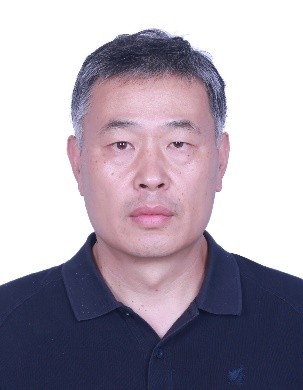 |
|||
| Shipeng Li | |||
| Beijing Institute of Technology, China | |||
|
Brief Biography: Now hosting characteristics prediction of the hot gas injected into water program supported by the NSFC and the other foundations from MOE and enterprises. The key points of the program is to probe the behavior of the jet exhaust and the influence to the vehicles/environments. |
|||
| Speech Title: Design and Numeric Simulation on the Solid Propellant Microthruster for Cubesat |
|||
| Abstract: The solid propellant microthruster is definitely a new class of micropropulsion system for the future microspacecraft, such as pico/nano-satellite and cubesat etc. It presents many advantages over other propulsion systems such as lesss system complexity, easy to controlling, no moving parts, and no propellant leakage possibility. The miniature of the system is not simply reductions in size, manufacture and capability of the normal size one.The matrix arranged solid propellant microthruster is a feasible way to overcome the one-shot limitation of it and has been used in many applications such as interception missiles, KKVs etc. The fire test of a standalone prototype microthruster was conducted to validate the numerical simulation conclusion. The theoretical specific impulse of the propellant was 255s. The efficiency, as well as matching capability between the ignitor and the main charge, was 84.3% calculated from the F-t curve. The size of the microthruster mainly affects the flow fields, heat transfer process between gas and nozzle cases, thus causes great loses of the microthruster’s efficiency. |
|||
| Keynote Speaker Ⅸ | |||
 |
|||
| Ping'an Liu | |||
| Harbin Engineering University, China | |||
| Brief Biography: Ping'an Liu is a professor at the College of Aerospace and Civil Engineering at the Harbin Engineering University (HEU). He received his PhD in mechanics in 2012 at Harbin Engineering University, China. His research is primarily focused on combustion and flow processes in solid rocket motors and water ramjet engines, metal fuel technology, underwater supercavitating vehicles and transmedia technology. He is an Associate Editor of Journal of Energy Science and Technology. Currently, he is also the deputy director of the Key Laboratory of Vehicle Transmedia Technology of the Ministry of Industry and Information Technology. He has published around 80 peer reviewed journal papers. He serves as the co-chair of the organizing committee of the 2025 International Conference of Mechanical Engineering on Aerospace (CoMEA). |
|||
| Speech Title: Progress in Metal-Fueled Transmedia Engine Research and Future Emerging Power Systems |
|||
| Abstract: The metal-fueled engine is attractive in aerospace and underwater propulsion because of its rather successful combination of such characteristics as high combustion heat, density, safety of powder handling, non-toxic combustion products, and price. However, to realize these advantages, metal-fueled propellants are required to have good delivery characteristics and stable, efficient combustion. These key technologies remain a major challenge in the development of metal-fueled engines. This presentation focuses on the present development of metal-fueled engine technology and its application in transmedia vehicle, specifically covering numerical modeling of the flow field in the engine and recent experimental studies. Finally, several novel power systems with high potential for future applications in launch and transmedia vehicles are introduced. |
|||
